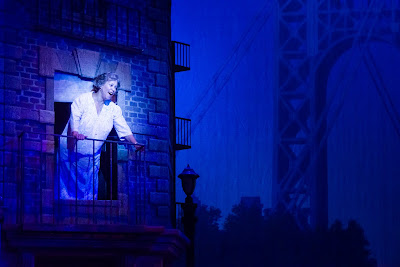Who were you rooting for?
 |
| I got to sit by Jill Shafer of Cherry and Spoon |
The 2017 Ivey Awards wrapped up on Monday night, and as usual they involved a lot of laughs, drinks, and love for the theater. What are the top things I enjoyed about this year's show? Let me count the ways:
1. Michelle Hensley, Michelle Hensley, Michelle Hensley: Could there be a more deserving winner for the Lifetime Achievement Award? Absolutely not. Many of us were bummed out when Hensley announced her retirement from the legendary Ten Thousand Things theater company that she founded earlier this year. She will be irreplaceable and highly missed, but in the meantime it was wonderful to see the life changing work she has instituted honored by a room of her peers. Hensley is literally the definition of leading by example and putting your money where your mouth is. If you don't know much about Ten Thousand Things, check out more by clicking on this link - and then promptly run to buy tickets for their new season. I'm not kidding around: this company will revolutionize the way you think about theater and change your life. We owe Michelle a whole, whole lot, and I sure hope she has something else up her sleeve. Her acceptance speech is the most moving I've heard to date; you can find a good selection on my Instagram account here or One Girl Two Cities, here.
2. Meghan Kreidler for Best Emerging Artist: This is the only annual award outside of the one for Lifetime Achievement. A past list of winners includes luminaries like Tyler Michaels King, Trevor Bowen, Mikell Sapp, Ricardo Vázquez, and Isabel Nelson. This year the honor was bestowed on Meghan Kreidler, who has quickly become one of my absolute favorite local actresses. She starred in my first MUST SEE performance this year in Vietgone (more here) and is currently starring in the truly excellent performance of Man of La Mancha from Theater Latte Da (more here). Kreidler is a powerhouse to watch, and she's got a spectacular future ahead of her.
3. Vietgone was the First Award Winner: As mentioned above, Vietgone was one of my absolute favorite shows of this year (and ever, honestly). I was so thrilled to see this excellent work recognized right away, as well as reprise a performance from the show during the Ivey's ceremony. I'd love to see this again; wondering why I loved it so much? Revisit my review here and learn more.
4. The Production was Tight as a Drum: Despite starting the show very late this year, everyone was in and out in well under two hours. Theaters, take note: if we can get through celebrating an entire year's worth of performances, an in memoriam, and 8 variety show performance numbers this quickly, your shows don't have to run as long as they typically do. I promise. It can be done.
5. Thomasina Petrus: I have loved Regina Marie Williams' work over the last couple of years as a host, but switching things up can be a good thing too. It was great to see Thomasina Petrus co-hosting the show this year, and her lovely, lyrical voice added a lot to the musical performances. Thomasina has long been an artist I admire locally, so I really enjoyed seeing her get in front of a big event.
6. Much Love for Volunteer Work: The Ivey Awards celebrate the best of the best in Twin Cities theater scene. Evaluations are completed by more than 150 volunteers, who comb theaters all over the Twin Cities for the best of the best. This might not sound like much, but it's a daunting task; last year, the evaluators saw more than 1,100 shows between September 2016 and August 2017 (aka three shows PER DAY in order to cover it all). It's a pretty incredible feat, and major kudos go to the awesome people putting time in to keep the awards running and to see all those shows!
7. Kasano Mwanza in "Beauty School Dropout:" I was pleasantly surprised by how much I enjoyed Grease earlier this year at the Chanhassen Dinner Theaters. Know what really knocks that show out of the park? Kasano Mwanza, who singlehandedly brings down the house with his ripping rendition of "Beauty School Dropout." Talk about someone who knows how to steal the show (it's literally his only appearance, and it's the first thing you remember months after leaving). Mwanza opened the Iveys this year, and his tour de force performance had the audience engaged from the first note. He's a star, full stop.
For a full list of winners, see as follows:
- Ensemble, Vietgone, Mixed Blood Theatre - Sun Mee Chomet, David Huynh, Meghan Kreidler, Flordelino Lagundino and Sherwin Resurreccion
- Production Design & Execution, Six Degrees of Separation, Theater Latté Da, Abbee Warmboe, Barry Browning, Sean Healey, Kate Sutton- Johnson, Bethany Reinfeld and Alice Fredrickson
- Concept & Execution, Safe at Home, Mixed Blood Theatre
- Actor, Nilaja Sun, Pike St., Pillsbury House + Theatre
- Director, Noël Raymond, The Children, Pillsbury House + Theatre
- Emotional Impact, Wit, Artistry
- Actor, Steven Epp, Fiddler on the Roof, Ten Thousand Things
- Actors, Sun Mee Chomet & Sherwin Resurreccion, The Two Kids That Blow Shit Up, Theater Mu
- Overall Excellence, Ragtime, Theater Latté Da
- Emerging Artist, Meghan Kreidler
- Lifetime Achievement, Michelle Hensley
What did you think of this year's winners? Who missed out? I'd love to hear your thoughts!

















































